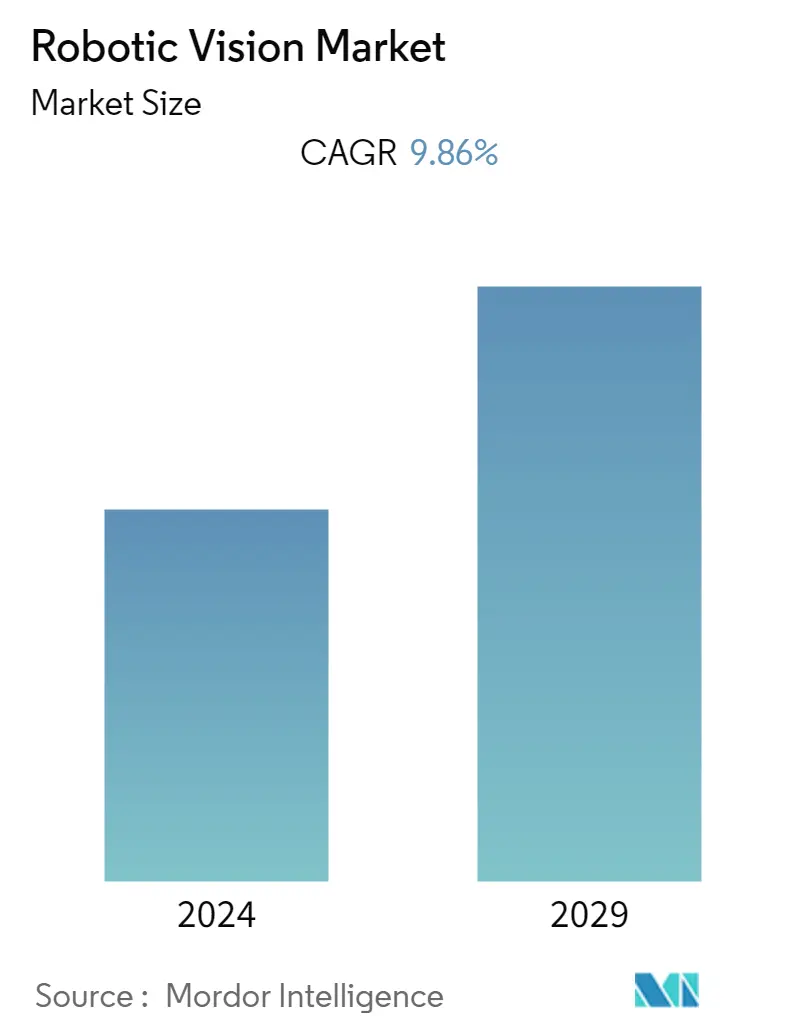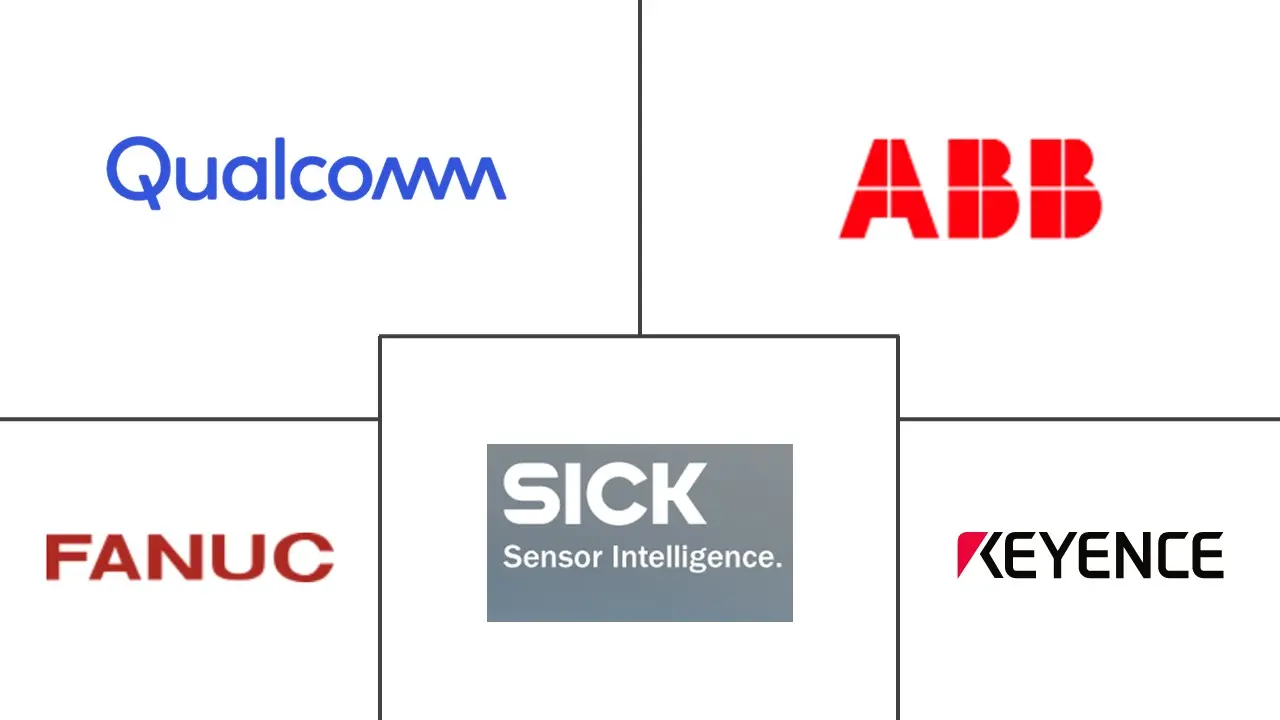Market Size of Robotic Vision Industry

| Study Period | 2019 - 2029 |
| Base Year For Estimation | 2023 |
| CAGR | 9.86 % |
| Fastest Growing Market | Asia Pacific |
| Largest Market | North America |
| Market Concentration | Medium |
Major Players
*Disclaimer: Major Players sorted in no particular order |
Need a report that reflects how COVID-19 has impacted this market and its growth?
Robotic Vision Market Analysis
The Robotic Vision Market is expected to register a CAGR of 9.86% during the forecast period. The market's growth is owing to the growing use of cognitive humanoid robots and the increasing deployment of machine vision systems in end-user segments like the Automotive Industry.
- Machine guidance systems use 2D and 3D machine vision systems to improve the accuracy and speed of assembly robots and automated material handling equipment, which plays a crucial role in the engine chassis marriage operations. Although the applications vary depending on the vehicle or model being produced, the general categories of applications are observed in robotics, dimensional gaging functions, assembly verification, flaw detection, paint job verification, and code reading.
- Robotic vision provides the robots with a sight that helps them to complement or replace manual inspection tasks using cameras and image processing. The applications range from basic tasks, like presence detection, to real-time inspection.
- Manufacturing companies across the globe realize the benefits of these robotic vision systems, particularly in areas where redundant tasks, like inspection, should be performed with precision. They play an essential role in high-speed production lines and hazardous environments. These systems' significant benefits include increased productivity, reduced machine downtime, and tighter process control.
- Significant expenditures are required to develop the core components of robotic vision, such as vision sensors and the underlying vision software. The initial cost of implementing robotic vision is also slightly more significant, which may impede market expansion.
- The COVID-19 pandemic is expected to increase the growth of vision-guided robots that can reduce human contact in multiple end-user industries. For instance, Orrbec, a US-based company, collaborated with robot manufacturers in China to deploy its 3D camera products in robots for different hospital applications. Food delivery robots, sterilization robots, and directional guiding robots using machine vision systems have been deployed across many hospitals in China. With the increased adoption of cognitive humanoid robots, the market is proliferating after the pandemic.
